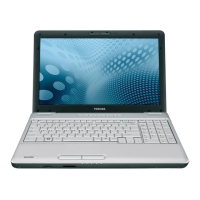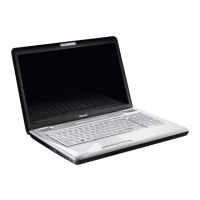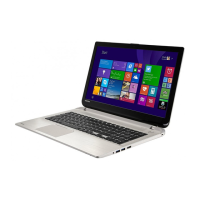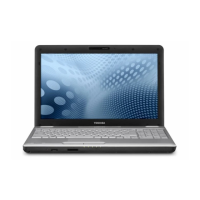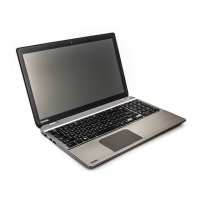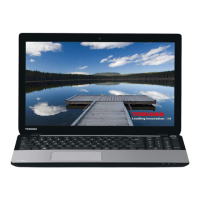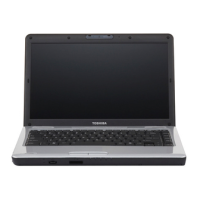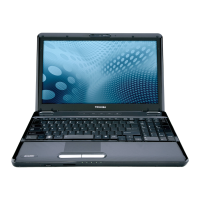
Do you have a question about the Toshiba Satellite L505-GS5035 and is the answer not in the manual?
Lists all hardware and documentation items included with the computer for verification.
Describes pre-installed operating systems, drivers, and utility software for the computer.
Introduces the computer's core components like processor, memory, storage, and ports.
Lists available optional devices that can expand the computer's capabilities and convenience.
Illustrates and identifies components on the front, sides, and underside of the computer.
Explains the function of LEDs, front panel buttons, and keyboard indicators.
Provides specifications for the DVD Super Multi drive, including region codes and writable disc types.
Details the AC adaptor's specifications, usage, and safety precautions.
Guides users through connecting the AC adaptor, opening the display, and turning on the power.
Explains Shut Down, Hibernation, and Sleep modes for managing computer power.
Outlines procedures for system recovery and restoring pre-installed software.
Covers basic Touch Pad operation, gestures like ChiralMotion, Pinch Zoom, and Momentum.
Details how to load, remove, and write data to CDs and DVDs using the optical drive.
Provides essential tips for protecting and maintaining CDs, DVDs, and floppy diskettes.
Explains how to adjust system volume, change sounds, and use the Realtek HD Audio Manager.
Covers using the web camera and setting up TOSHIBA Face Recognition for system logon.
Guides on setting up and using Wireless LAN and LAN connections.
Provides instructions for safely cleaning the computer and precautions for moving it.
Differentiates typewriter, function, hot, and special Windows keys.
Explains the use of function keys (F1-F9) and hot keys for system control.
Details how to use the FN key with other keys to activate specific features or functions.
Describes the special function keys that interact with the Windows operating system.
Explains the meaning of the Battery, DC IN, and Power LED indicators.
Covers battery types, usage, charging, monitoring, and maximizing battery life.
Provides step-by-step instructions for safely removing and installing the computer's battery pack.
Describes Hibernation, Sleep, and Boot modes for managing computer power states.
Guides on accessing and navigating the TOSHIBA HW Setup utility for system configuration.
Details setting and managing user and supervisor passwords for computer security.
Covers configuring display options and boot priority for the computer.
Explains features like Wake-up on Keyboard and Wake-up on LAN for system control.
Describes settings for built-in LAN, Wireless Communication Switch, and SATA interfaces.
Lists supported memory card types and options for expanding system memory.
Provides instructions for installing and removing computer memory modules.
Details optional power devices like battery packs, AC adaptors, and battery chargers.
Covers connecting and using optional peripherals like USB floppy drives, eSATA, and security locks.
Guides on connecting external monitors and televisions via HDMI or other ports.
Outlines a systematic approach and guidelines for resolving computer issues effectively.
Discusses common problems related to hardware components like system start-up, power, and display.
Addresses problems with hard disk drives, optical drives, and memory cards.
Solves issues related to USB devices, LAN, wireless, Bluetooth, and sound systems.
Notes that CPU performance may vary based on operating conditions and configuration.
Provides information on 64-bit computing, memory usage, battery life, and storage capacity.
Lists the operating and non-operating environmental conditions and power requirements for the computer.
Explains the role of the display controller in graphics rendering and display standards.
Details the technical specifications of the wireless LAN card, including standards and data rates.
Explains variations in radio characteristics and supported frequency bands for wireless communication.
Lists international certification agencies and standards for AC power cords and connectors.
Describes the software that monitors system functions and logs relevant information.
Provides instructions on how to start and enable the TOSHIBA PC Health Monitor program.
Provides a list of common abbreviations used in the manual with their definitions.
